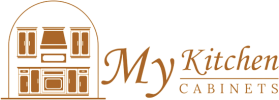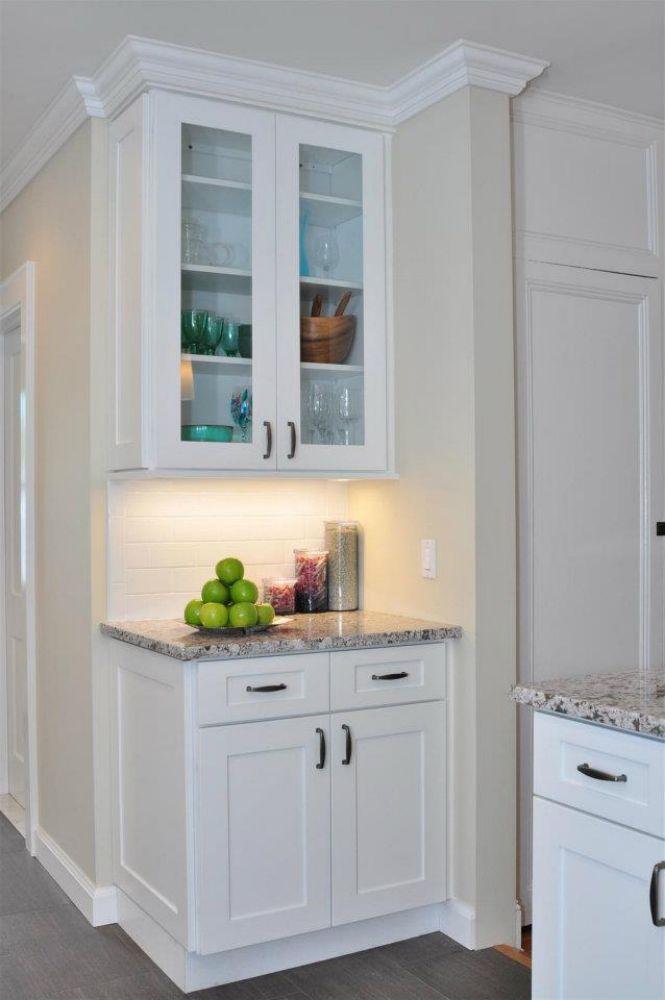The Art of Pairing Cabinetry and Hardware
Choosing the perfect hardware finish might seem like a small detail in your kitchen renovation, but it’s one of the most impactful design decisions you’ll make. Cabinet knobs, pulls, and handles serve as the jewelry of your kitchen—they tie the entire space together and can completely change the tone of your design. Whether you’re going for modern minimalism, rustic farmhouse, or coastal chic, your hardware finish can make or break your kitchen’s visual harmony.
When selecting your hardware, you’ll want to ensure it complements the color, style, and texture of your kitchen cabinets. At My Kitchen Cabinets, we understand that every home has a unique personality, and choosing the right hardware finish is about achieving balance between function and aesthetic.
This comprehensive guide will help you navigate finishes, materials, and combinations to ensure your kitchen cabinetry looks cohesive, timeless, and beautifully polished.
Understanding the Importance of Hardware Finishes
Cabinet hardware finishes aren’t just about color—they define the texture, mood, and feel of your entire kitchen. The finish you choose can enhance contrast, create warmth, or emphasize a particular design theme.
The right finish can:
-
Accentuate cabinet color and texture
-
Create a design focal point (especially on kitchen islands or contrasting cabinets)
-
Enhance lighting and ambiance through reflective or matte textures
-
Tie in with other kitchen elements, such as faucets, lighting, and appliances
Selecting the right finish means understanding how materials, tones, and textures interact with your cabinetry and overall design vision.
Types of Hardware Finishes for Kitchen Cabinets
Before deciding which finish works best for your kitchen cabinets, familiarize yourself with the most popular hardware finish options. Each has unique visual qualities and maintenance requirements.
1. Polished Chrome
Polished chrome is sleek, shiny, and modern. It pairs beautifully with white or gray cabinets, reflecting light and giving kitchens a bright, clean look. Chrome is especially popular in contemporary and transitional kitchens.
Best Pairings: White shaker cabinets, glossy finishes, or marble countertops.
Pros: Easy to clean, highly reflective.
Cons: Shows fingerprints and water spots easily.
2. Brushed Nickel
Brushed nickel is one of the most versatile finishes. Its subtle, warm tone works well with almost any cabinet color and hides smudges better than polished metals.
Best Pairings: Cool tones like gray, navy, or blue cabinets.
Pros: Durable, low maintenance, timeless appeal.
Cons: Less dramatic than shinier finishes.
3. Satin Brass (or Brushed Gold)
Satin brass provides warmth and luxury without being overly flashy. Unlike the shiny brass of decades past, modern satin finishes are muted and sophisticated, offering a perfect contrast to neutral or white cabinetry.
Best Pairings: Navy blue, forest green, black, or white cabinets.
Pros: Adds elegance, resists fingerprints.
Cons: Can clash with stainless-steel appliances if not balanced correctly.
4. Matte Black
Matte black hardware offers striking contrast and contemporary flair. It pairs exceptionally well with light-colored or natural wood cabinets, creating a bold and modern statement.
Best Pairings: White, light wood, or gray cabinets.
Pros: Versatile, hides dirt well, chic modern appeal.
Cons: Can make small spaces feel darker if overused.
5. Oil-Rubbed Bronze
Oil-rubbed bronze has a rich, rustic charm, perfect for farmhouse or traditional kitchens. Its dark brown tones with subtle copper highlights provide depth and texture.
Best Pairings: Cream, beige, or warm wood cabinets.
Pros: Durable, adds warmth and old-world character.
Cons: Can appear dated in ultra-modern designs.
6. Antique Pewter or Silver
This finish bridges traditional and contemporary styles, offering a slightly aged look without being overly dark. Antique pewter pairs beautifully with cooler cabinet tones and stone textures.
Best Pairings: Gray, slate, or weathered wood cabinets.
Pros: Unique texture, hides fingerprints well.
Cons: Less readily available than other finishes.
7. Copper and Rose Gold
These finishes add warmth, femininity, and artistic charm. They work best as accent hardware in kitchens with minimalist or two-tone designs.
Best Pairings: Matte white or navy cabinets, marble or quartz countertops.
Pros: Eye-catching and luxurious.
Cons: Requires regular polishing to maintain luster.
Matching Hardware Finishes to Cabinet Colors
Your cabinet color determines how bold or subtle your hardware should be. Understanding how colors and finishes complement or contrast can help you find the perfect combination.
White Cabinets
White cabinets are timeless and adaptable—they look great with almost any finish. For a classic look, pair with polished chrome or brushed nickel. To add warmth, choose satin brass or matte black for striking contrast.
Gray Cabinets
Gray cabinetry blends beautifully with cool-toned metals. Brushed nickel, stainless steel, or polished chrome enhance the modern feel, while oil-rubbed bronze or gold introduces warmth and balance.
Blue Cabinets
Blue cabinets—especially navy or deep teal—pair perfectly with brass, gold, or champagne bronze hardware for a rich coastal or luxurious aesthetic. For a contemporary touch, try matte black or polished chrome.
Green Cabinets
Earthy greens and sage tones work well with warm hardware such as brass, gold, or copper. For a rustic vibe, pair with oil-rubbed bronze.
Black Cabinets
Matte black or glossy black cabinetry looks stunning with contrasting metals. Choose brushed nickel for subtlety, gold for glamour, or stainless steel for a cohesive modern finish.
Wood Cabinets
For natural wood tones, balance the warmth with complementary finishes. Light woods like oak pair beautifully with black or pewter, while darker woods like walnut shine with brass or bronze.
Mixing and Matching Hardware Finishes
While uniform hardware finishes provide a clean, cohesive look, mixing finishes can add depth and visual interest when done correctly.
Here’s how to do it right:
-
Limit to Two Finishes: Too many finishes can make your kitchen look chaotic. Stick to two complementary metals—for example, matte black with brushed brass.
-
Balance by Zone: Use one finish for upper cabinets and another for lower ones, or keep consistent hardware on cabinets while varying it on the island.
-
Maintain Consistency in Tone: Warm metals (brass, bronze, gold) pair best with other warm finishes, while cool metals (chrome, nickel, stainless steel) complement each other.
-
Coordinate with Fixtures: Tie in your faucet, lighting, and appliances for harmony without total uniformity.
Mixing finishes successfully can make your kitchen look curated and designer-approved.
Coordinating Hardware with Kitchen Style
The finish you choose should reflect your overall kitchen style—modern, traditional, rustic, or transitional.
Modern and Contemporary Kitchens
Choose clean lines and sleek finishes like polished chrome, brushed nickel, or matte black. Pair these with flat-panel or frameless kitchen cabinets for a minimalist look.
Traditional Kitchens
Opt for ornate hardware in antique brass, pewter, or oil-rubbed bronze. These finishes complement raised-panel or shaker cabinets with detailed molding.
Farmhouse and Rustic Kitchens
Oil-rubbed bronze, distressed black, or antique brass finishes blend beautifully with natural wood or white shaker cabinets, creating a cozy, lived-in feel.
Coastal and Beach-Style Kitchens
Brushed nickel, chrome, or matte white finishes pair perfectly with soft blues, whites, and natural wood tones—evoking breezy seaside elegance.
Transitional Kitchens
A balanced approach works best here. Combine the warmth of brass or bronze with the simplicity of modern cabinet designs for a sophisticated, timeless result.
The Role of Lighting in Choosing Hardware Finishes
Lighting dramatically affects how your hardware appears. A finish that looks bright under daylight may seem muted under artificial lighting.
Tips for Choosing with Lighting in Mind:
-
Test hardware samples under your kitchen’s actual lighting conditions.
-
Warm lighting enhances gold and brass tones.
-
Cool LED lighting flatters chrome, nickel, and black finishes.
-
Natural light brings out the texture and undertones in brushed metals.
Your hardware’s reflective quality should work harmoniously with your lighting design, not against it.
Practical Considerations: Maintenance and Durability
A hardware finish’s beauty is only as good as its longevity. Families with busy kitchens should prioritize finishes that resist fingerprints, scratches, and tarnish.
-
Low Maintenance Options: Brushed nickel, satin brass, and oil-rubbed bronze hide smudges well.
-
High-Maintenance Finishes: Polished chrome and copper require frequent cleaning to retain shine.
-
Protective Coatings: Some finishes include lacquer or powder coatings to prevent oxidation and wear.
Durable finishes not only maintain appearance but also preserve the value of your kitchen cabinets over time.
How to Choose Hardware Shapes and Sizes
Finish is just one part of the equation—shape, size, and proportion also influence how your hardware complements your cabinets.
-
Knobs: Ideal for cabinet doors. Choose round or oval knobs for classic designs or square ones for modern aesthetics.
-
Pulls: Work best for drawers and larger doors. Long, linear pulls enhance modern designs, while curved ones suit traditional spaces.
-
Appliance Pulls: For integrated appliances, match finishes and dimensions with your cabinet hardware for consistency.
When choosing size, make sure hardware is proportional to cabinet scale—large pulls look elegant on tall pantry doors, while smaller knobs suit compact drawers.
Sample Combinations for Inspiration
-
Classic White Shaker Cabinets + Brushed Nickel Hardware: A timeless, clean combination that works with any design.
-
Navy Cabinets + Satin Brass Hardware: Adds luxury and warmth to a bold color palette.
-
Light Oak Cabinets + Matte Black Hardware: Modern yet organic, ideal for Scandinavian-inspired designs.
-
Gray Cabinets + Polished Chrome Hardware: Sleek and contemporary with reflective contrast.
-
Green Cabinets + Antique Bronze Hardware: Earthy, charming, and full of personality.
These examples show how hardware finishes can transform the tone of your kitchen cabinets from simple to stunning.
Common Mistakes to Avoid When Choosing Hardware Finishes
-
Ignoring Cabinet Undertones: Always consider the warmth or coolness of your cabinet color before picking hardware.
-
Over-Matching Everything: Matching every metal (faucets, lights, pulls) can make a kitchen feel flat. Aim for coordination, not uniformity.
-
Forgetting Functionality: Some finishes are slippery or uncomfortable to grip—test them before buying.
-
Neglecting Sample Testing: Always order samples to see how finishes look against your cabinetry and lighting.
-
Disregarding Kitchen Size: Dark hardware on dark cabinets can make small spaces feel heavy—balance contrast wisely.
Avoiding these mistakes ensures your kitchen design feels intentional and cohesive.
Conclusion
Choosing the right hardware finish for your kitchen cabinets is both an art and a science. It’s about understanding balance—between color and contrast, style and function, texture and tone. The right finish doesn’t just complement your cabinets; it enhances your kitchen’s overall aesthetic, tying together appliances, lighting, and décor.
When selecting your hardware, consider your cabinet color, kitchen style, and lighting conditions. Whether you prefer the timeless appeal of brushed nickel, the boldness of matte black, or the warmth of satin brass, each finish brings its own personality and depth to your design.
At My Kitchen Cabinets, we believe that every kitchen should reflect the homeowner’s taste and lifestyle. Our expertly crafted cabinets are designed to pair beautifully with a range of hardware finishes, ensuring that your kitchen not only functions flawlessly but looks spectacular for years to come.
The perfect hardware finish is more than a detail—it’s the final touch that makes your kitchen truly yours.
FAQs
1. Should all the hardware in my kitchen match?
Not necessarily. You can mix finishes if they complement each other. For instance, pairing matte black cabinet pulls with brass light fixtures adds visual depth without clashing.
2. What hardware finish is easiest to maintain?
Brushed nickel and oil-rubbed bronze are the easiest to maintain since they hide fingerprints and water spots well.
3. Can I use different hardware finishes for upper and lower cabinets?
Yes. Using one finish for upper cabinets and another for lower cabinets or the island adds dimension and personality to your design.
4. How do I make hardware stand out on my kitchen cabinets?
Choose a finish that contrasts with your cabinet color—for example, black hardware on white cabinets or gold hardware on navy blue cabinets.
5. Should my cabinet hardware match my faucet and appliances?
Matching isn’t mandatory, but coordinating tones helps create visual harmony. For instance, stainless-steel appliances pair beautifully with brushed nickel or chrome hardware.
Read: What are the best ways to finance new kitchen cabinets?
Read: Which kitchen cabinets are most resistant to humidity and temperature changes?

